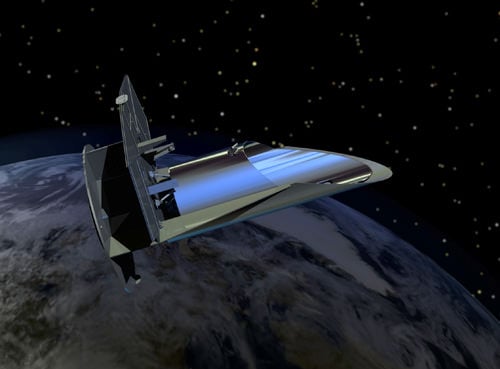Jet Propulsion Laboratory's proposed FINESSE space telescope may not
hunt
for exoplanets, but it
will
find out what they're made of.
Part of NASA's Explorers program, FINESSE -- which stands for (take a deep breath)
F
ast
IN
frared
E
xoplanet
S
pectroscopy
S
urvey
E
xplorer -- would gather spectroscopic data from 200 known exoplanets over a two-year period, helping scientists to determine the composition of their atmospheres, surfaces, and even their weather.
While huge discoveries have been made by both ground- and space-based telescopes like
Kepler
and
Corot
over the past several years, identifying thousands of exoplanetary candidates, FINESSE will be the first mission dedicated to finding out what the atmospheres are like on worlds outside our solar system.
Using a sensitive spectrograph covering 0.7-5.0 microns, FINESSE will be able to identify molecular bands of water, methane, carbon monoxide, carbon dioxide, and other molecules. Its sensitivity and stability will even allow it to detect the differences between an exoplanet's day and night side, allowing wind flow and weather to be determined.
Known as an Offner spectrometer, the design of the FINESSE detector is derived from the Moon Mineralogy Mapper instrument, which was designed at JPL and flew to the Moon aboard India's
Chandrayaan-1
spacecraft.
[/caption]
Touted as "the next step" in exoplanetary exploration, FINESSE is proposed for launch in October 2016.
Learn more at JPL's FINESSE site here.
- Mark Swain, principal investigator for FINESSE
 Universe Today
Universe Today
